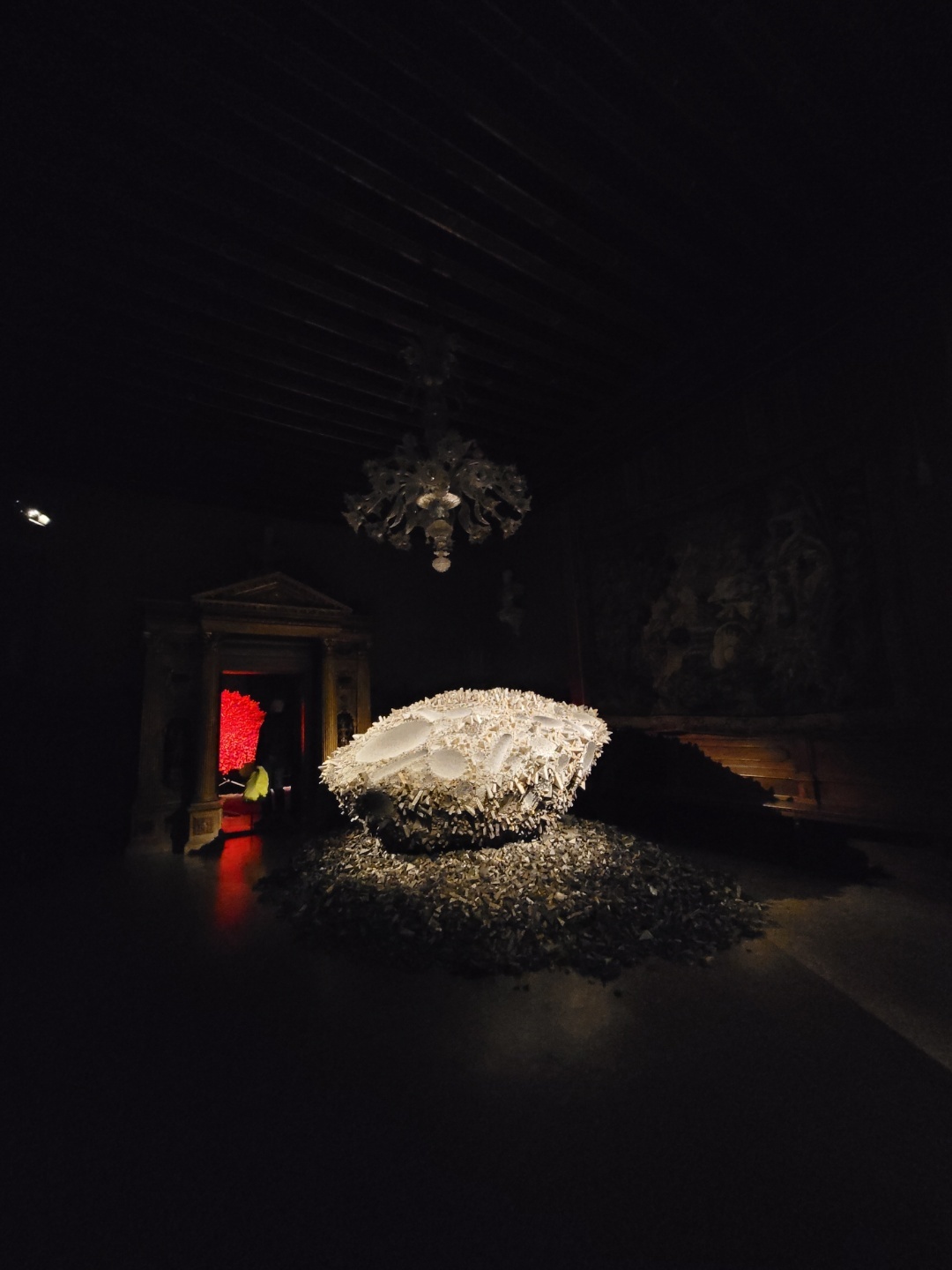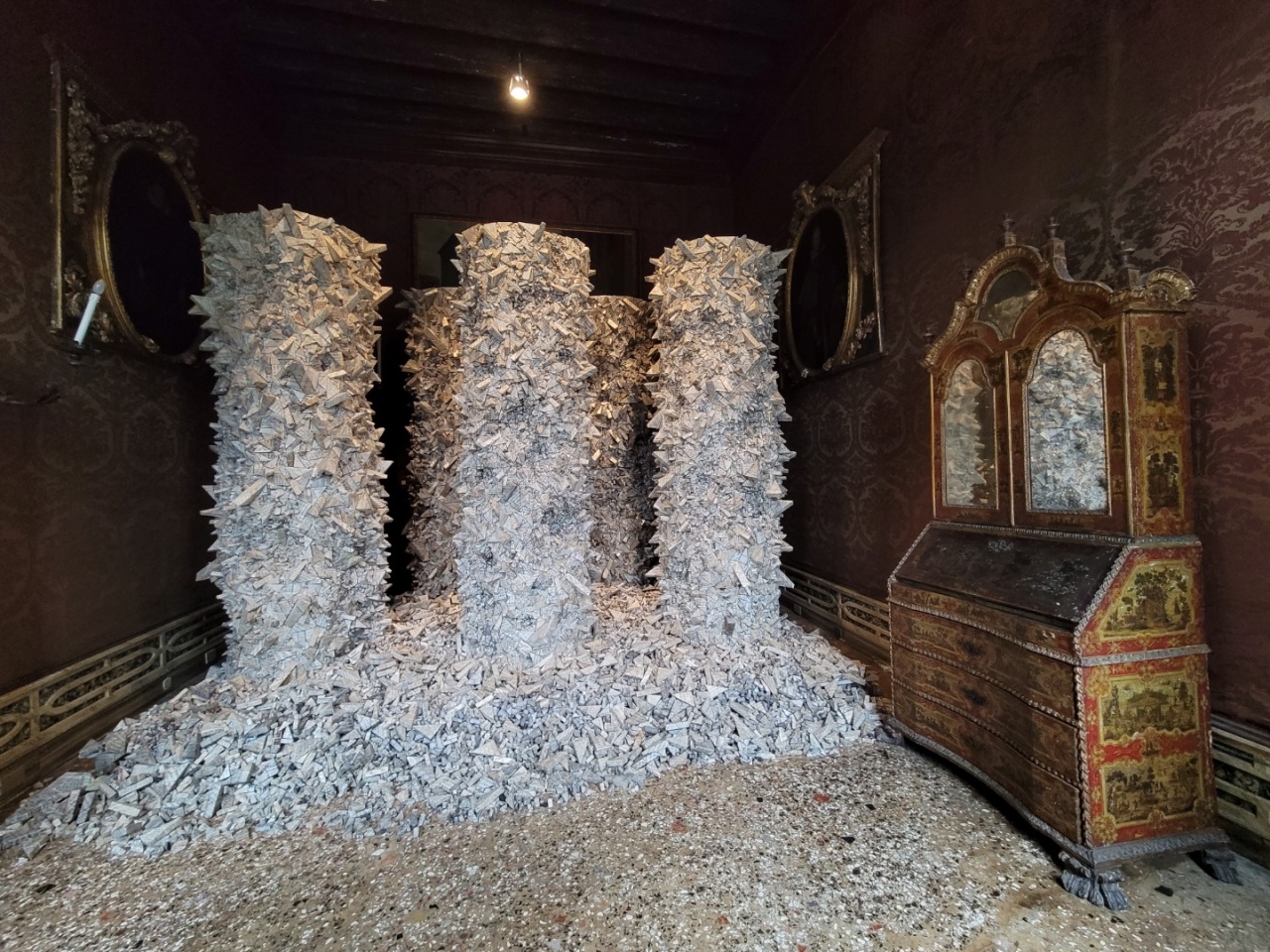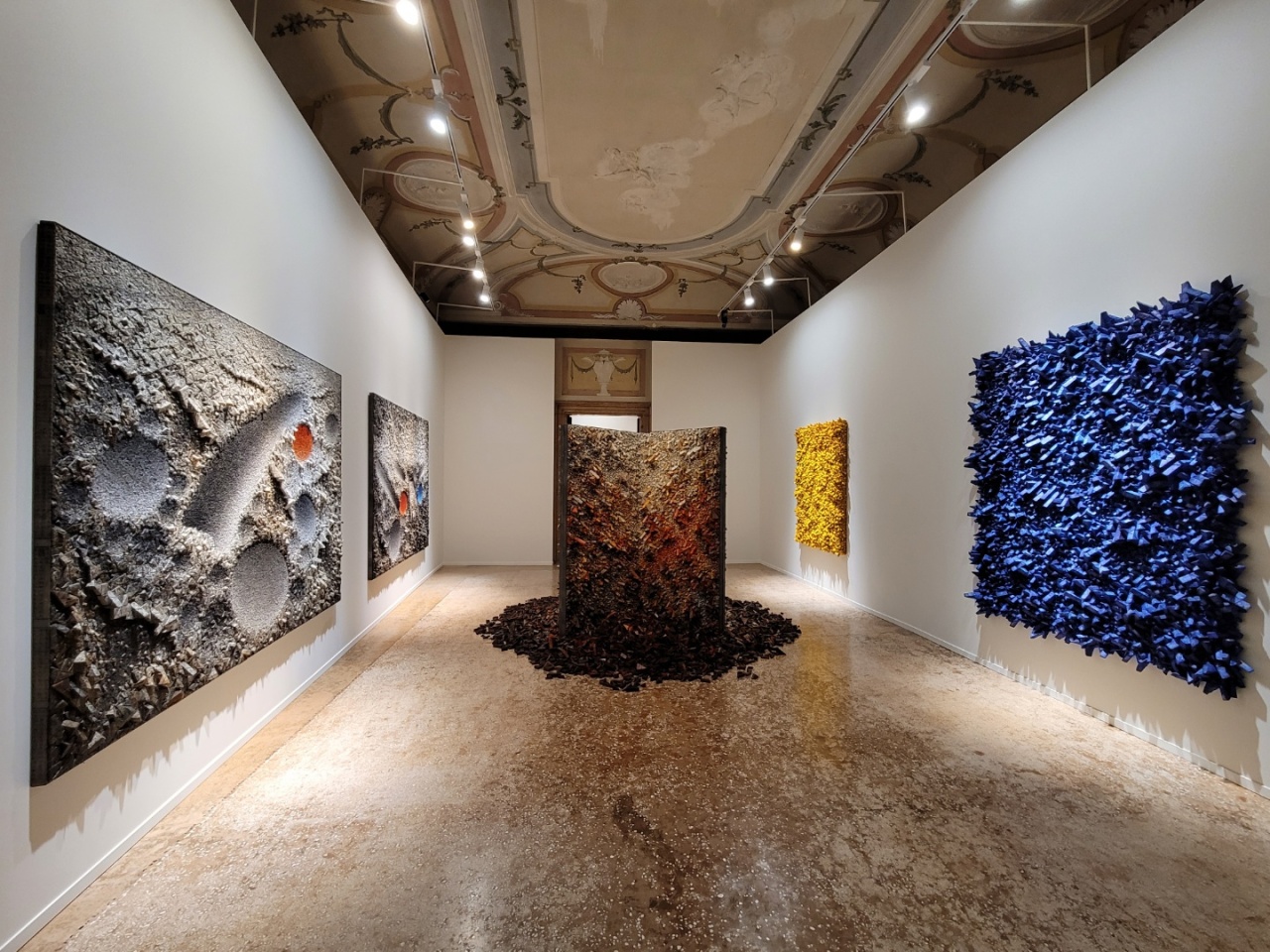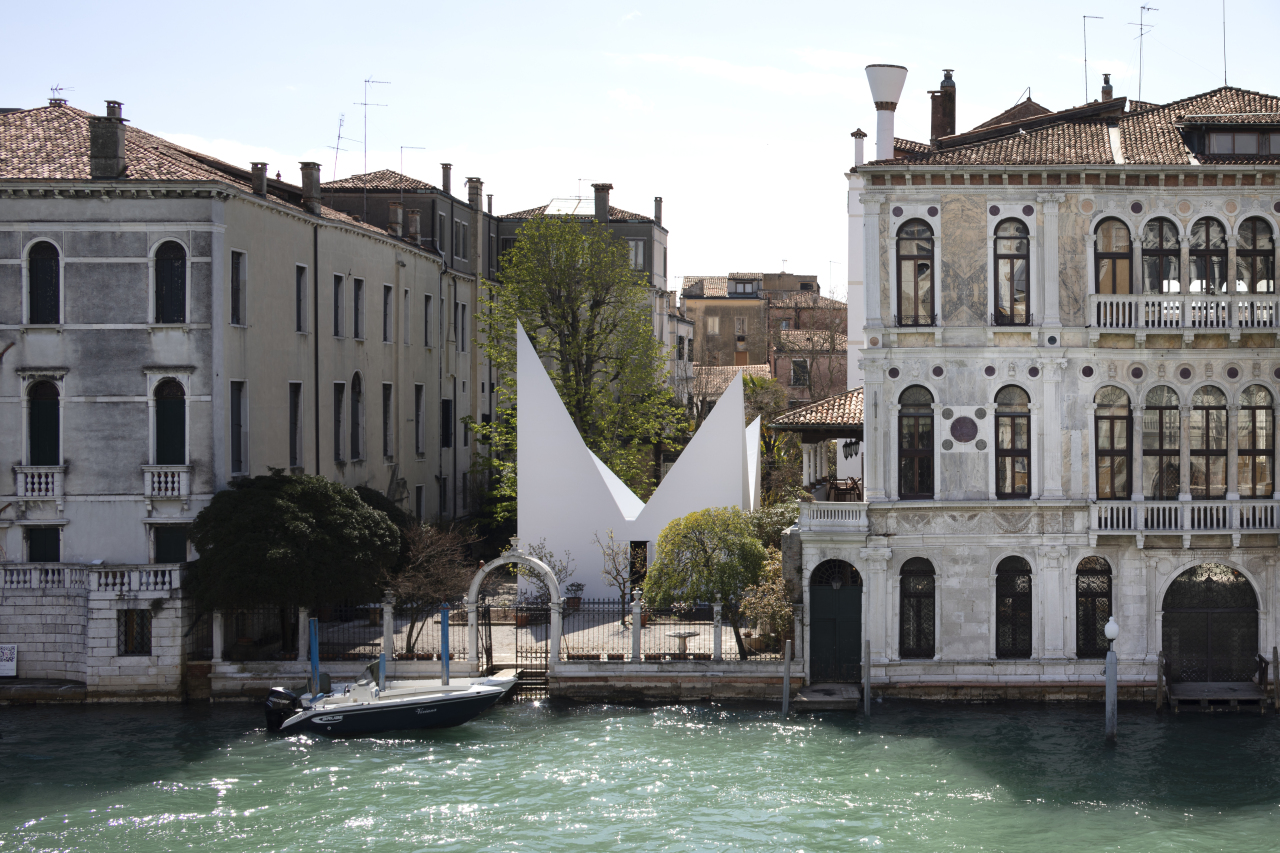 |
Installation view of “Chun Kwang Young: Times Reimagined” at Palazzo Contarini Polignac in Venice, Italy (Park Yuna/The Korea Herald) |
VENICE, Italy -- The sound of a heartbeat reverberates inside a dark room where a large hanji sculpture sits. Sitting near the sculpture, you will notice that heartbeat is irregular, leading you to wonder if your own heart is healthy.
Chun Kwang-young has stubbornly pursued his art with hanji over the past 30 years. His perseverance as an artist is being recognized at a collateral exhibition of the 59th Venice Biennale titled “Chun Kwang Young: Times Reimagined” at Palazzo Contarini Polignac, where 40 large-scale sculptures, installations and hanji pieces are on display.
Chun repeatedly forms hanji into 3D triangular shapes -- fashioned after the packages that hold traditional medicinal herbs -- to constitute his art. They are turned into installations, sculptures and 3D paintings that he hopes will stand the test of time. The 78-year-old artist sticks to using pages of old books made of hanji that are at least 70 to 80 years old.
 |
Installation view of “Chun Kwang Young: Times Reimagined” at Palazzo Contarini Polignac in Venice, Italy (Park Yuna/The Korea Herald) |
“Chun had a vivid memory from childhood of visiting an herbal medicine clinic where triangle-shaped medicine packages hung from the ceiling. They treated illnesses with herbs, which was a very organic idea because humans are from nature,” Lee Yong-woo, who curated the exhibition, said in a video presentation that accompanies the exhibition.
Hanji is traditional Korean paper made from the inner bark of mulberry trees. It is mostly handmade by craftspeople using a scoop net and goes through some 100 processes. The handmade mulberry paper is said to last 1,000 years, said Lee Byung-sup, president of the Andong Hanji factory, in a video that plays at the exhibition.
“Small triangles fit well in small spaces and large triangles fit well in large spaces. ... Our life is like this, small and big triangles and dark and bright colors are all clumped together, they are all in one,“ Chun said in the video.
After studying at Hongik University in Seoul, Chun received his master of fine arts from the Philadelphia College of Art. He pursued abstract art in the 1970s, but had a lingering feeling of discomfort that he was wearing “clothes that do not fit.” He then began to delve into hanji. With the organic material, which is highly recyclable, Chun has reached a point where he explores “interconnectedness between living beings and social-ecological values of their relationships,” according to Lee. Chun’s works have only one title: “Aggregation.”
 |
Installation view of “Chun Kwang Young: Times Reimagined” at Palazzo Contarini Polignac in Venice, Italy (Park Yuna/The Korea Herald) |
“In his art, paper is tied to the environmental aspects. The time that he lives in, the air that he breathes in and the environment in which he lives. Chun started asking himself what qualitative values this world had,“ curator Lee said in the video.
“Art is what makes people think. Art that does not make people think is just an expression,” he added.
Lee selected works for the 2015 “Dansaekhwa” exhibition at the 56th Venice Biennale, introducing Korean artists who are loosely grouped as dansaekhwa artists on the international art scene. He is also the founding artistic director of the Gwangju Biennale, launched in 1995.
Stepping outside the building, the “Hanji House” installation sits in a small garden designed by Italian architect Stefano Boeri. The foldable architectural structure was built with timber and textile membrane on soil as a practical model of “paper-tree architecture,” which can be viewed as a light box from a distance. The architect was inspired by the playful yet meditative practice of folding paper in an infinite number of ways.
“Chun Kwang Young: Times Reimagined,” promoted by the Boghossian Foundation, a nonprofit institution based in Brussels, will run through Nov. 27.
 |
Installation view of the “Hanji House” for “Chun Kwang Young: Times Reimagined” at Palazzo Contarini Polignac in Venice, Italy (Courtesy CKY Studio, Alice Clancy) |




![[Venice Biennale 2022] Venice exhibition highlights Korean contemporary artist Ha Chong-hyun](http://res.heraldm.com/phpwas/restmb_idxmake.php?idx=605&simg=/content/image/2022/04/25/20220425000229_0.jpg)
![[Venice Biennale 2022] ‘The Milk of Dreams’ breaks barriers of human cognition](http://res.heraldm.com/phpwas/restmb_idxmake.php?idx=605&simg=/content/image/2022/04/25/20220425000847_0.jpg)
![[Venice Biennale 2022] Park Seo-bo shows his unending spirit with new Ecriture works in Venice](http://res.heraldm.com/phpwas/restmb_idxmake.php?idx=605&simg=/content/image/2022/05/02/20220502000879_0.jpg)



![[Today’s K-pop] Blackpink’s Jennie, Lisa invited to Coachella as solo acts](http://res.heraldm.com/phpwas/restmb_idxmake.php?idx=644&simg=/content/image/2024/11/21/20241121050099_0.jpg)



